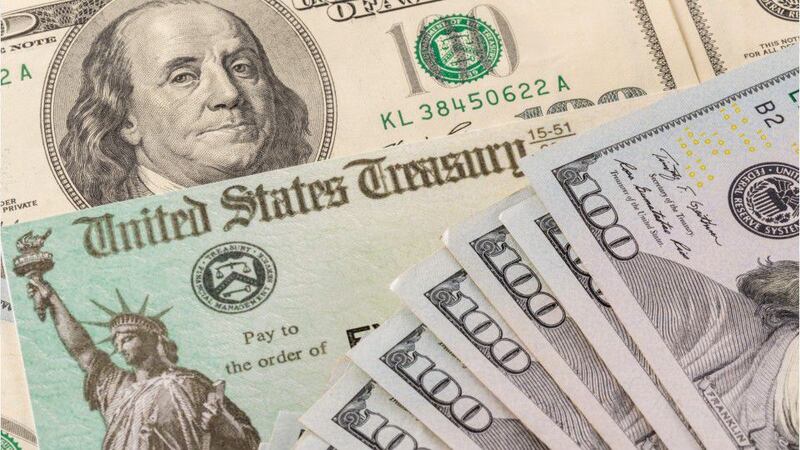Update
10 a.m. ET March 9, 2021: House Majority Leader Steny Hoyer had initially said that the House would vote Tuesday on the relief bill, but now the vote will “most likely” take place on Wednesday, a senior Democratic leadership aide told CNN.
Original story:
President Joe Biden assured Americans that “help is on the way” in the form of a $1.9 trillion COVID-19 relief bill that passed the Senate on Saturday and is headed back to the House this week for final passage.
While the legislation is well on its way to becoming law, a few things have to happen first.
The bill, after having passed the Senate on Saturday, is headed for a vote in the House. According to House Majority Leader Steny Hoyer, D-Maryland, approval of the Senate version of the bill is expected Tuesday. The bill will then be sent to Biden’s desk for his signature, probably on Wednesday, making it law.
House Speaker Nancy Pelosi, D-California, said she is hopeful that some bipartisan support will push through the final passage of the bill in the House.
“The House now hopes to have a bipartisan vote on this lifesaving legislation and urges Republicans to join us in recognition of the devastating reality of this vicious virus and economic crisis and of the need for decisive action,” she said.
No Republican in Congress has voted for the stimulus bill in final votes. Because of the reconciliation process used to pass the bill, no Republican support was required since the GOP is in the minority in both chambers.
How fast will the programs go into effect after Biden signs the bill and when can you expect your stimulus check?
If recent history is any indication, it will happen pretty quickly.
When will the checks go out?
The IRS began sending $600 stimulus checks out three days after President Donald Trump signed the previous stimulus bill into law in December. It’s likely that that sort of timeline will be followed with this check.
The payments do not go out all in one day. If the IRS has your direct deposit information, you will likely get the direct payment first.
Some people will get their payments via a paper check or a debit card, and if you get the money that way, it will take a bit longer because it is sent through the mail.
Who will get them?
The criteria for getting the direct payment are different than it was for the first two stimulus checks. The full $1,400 payments will go to individuals earning less than $75,000 and couples earning less than $150,000. Those meeting the income requirements will receive an additional $1,400 per dependent.
The payments will gradually phase out at $80,000 for individuals and married couples earning more than $160,000, regardless of how many children they have.
About 8%-10% of those who received a payment in the last two rounds will not receive one this time.
If you get Social Security retirement payments, Supplemental Security Income, Railroad Retirement Board benefits or Veterans Affairs benefits, you will receive the stimulus payment the same way you receive those payments. You do not need to take any additional steps to get the payment.
What about the other programs?
Financial help in the form of federal unemployment benefits, tax credits and health care insurance, are on their way as well.
Unemployment benefits
Both Pelosi and Senate Majority Leader Chuck Schumer, D-N.Y., said the COVID-19 bill needed to be passed as soon as possible because federal unemployment benefits extended from previous COVID-19 relief packages were set to expire on Sunday.
Currently, the Senate and House bills differ on the provisions. The House wants to give $400 a week through Aug. 29. A compromise in the Senate calls for $300 a week through Sept. 6.
If the House approves the Senate’s plan, those getting the benefits will likely not see a break in payments. However, some states require full guidance from the U.S. Department of Labor to implement the program, and that could delay benefits for up to three weeks.
Health insurance subsidies
Those getting health care insurance under the Affordable Care Act, commonly referred to as “Obamacare,” will be seeing help with the cost of premiums.
Under the bill, enrollees will be charged no more than 8.5% of their income for premiums. Also, those earning more than the current cap of 400% of the federal poverty level -- about $51,000 for an individual and $104,800 for a family of four in 2021 -- would become eligible for help.
If you qualify for the federal premium subsidies for “Obamacare,” you won’t see those regulations go into effect right away. It may take a few weeks for the Healthcare.gov program to be updated.
The provision is retroactive to January and is in effect for two years.
If you are unemployed, you can sign up for the program with no premiums in 2021. Lower-income enrollees could have their premiums eliminated completely for the two-year period.
Child tax credit
This COVID-19 relief bill includes temporary enhancements to the child tax credit that will send parents of children up to 17 years old some extra money.
Both the House and Senate bills include an increase in the child tax credit to $3,600 for each child younger than 6 and $3,000 for each child between 6 and 17 in 2021. The credit would become fully refundable for the year and may be paid out monthly rather than as a lump sum at tax time. That program begins in July.
Cox Media Group








